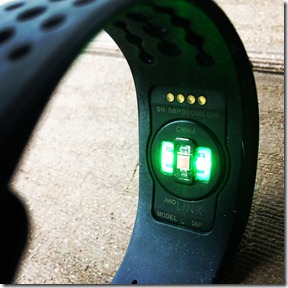 In the past I have not been a regular user of a heart rate monitor while running. I’ve used them on and off, and have found heart rate data to be a good way to monitor my effort, but I’m not a huge fan of chest straps since they occasionally chafe me and it’s just one more piece of gear I have to remember to put on before I leave for a run.
In the past I have not been a regular user of a heart rate monitor while running. I’ve used them on and off, and have found heart rate data to be a good way to monitor my effort, but I’m not a huge fan of chest straps since they occasionally chafe me and it’s just one more piece of gear I have to remember to put on before I leave for a run.
A few months ago a company named Mio contacted me to ask if I’d be interested in trying one of their wrist-mounted heart rate monitors (Disclosure: the product reviewed here was a media sample provided free of charge for review purposes – you can read about my approach to writing honest blog reviews here). I really like the concept of wrist-mounted HRMs. I can wear it as I would a watch, and leave it on my wrist indefinitely if I feel like it. No more strap to worry about taking on and off, no sweaty bands to rinse out, etc. I was game to give it a try, and they offered a choice between the Mio Link and the Mio Alpha.
The main differences between the Link and Alpha are as follows:
- Mio Alpha (below right) has a screen and looks like a regular wristwatch
- Mio Link can communicate via both ANT+ and Bluetooth Smart, whereas the Alpha lacks ANT+
- Mio Link costs $99, whereas the Alpha costs $199
Since I already have a GPS watch with a screen on one wrist (Garmin 620) and a Garmin Vivofit activity monitor on the other wrist (also with a screen), the Mio Alpha seemed like overkill. I’m used to wearing lots of electronic devices, but three screens is a bit much! So I agreed to try out the Link, and I’ve now been using it regularly for a bit over a month.
How It Works
The Mio works by shining two green LEDs through the skin, and there is a sensor between the lights that can monitor pulsing blood flow below the device. Pretty cool! On their website, Mio points out that similar technology is used in hospitals with those little heart-rate sensing clips they put on your finger, but the challenge was to create a device that can measure an athlete on the move, not a patient sitting or lying down in a hospital. This is dependent on a tight light seal between the device and the skin – more on this in a bit.
You can see the Mio Link with the LEDs turned off and on in the two photos below. The sensor is located between the two lights.
The Mio Link is simple to operate – you just press the button on the top of the device and a light flashes. It can then be paired either with a watch or phone via ANT+ or Bluetooth Smart (a device compatibility list can be found here). Connectivity has been a breeze for me with my iPhone 5s, the Garmin 620, a Garmin Forerunner 15, and the Garmin Vivofit. You can see the Vivofit reading data from the Mio Link in the photo below (the first number denotes HR zone, second number is current heart rate) – they both fit comfortably on the same wrist and the proximity makes for a solid and stable connection. I have also recorded concurrently with my Vivofit and Garmin 620 (on the opposite wrist) without issue.
While running, the Mio Link has a light that flashes different colors to indicate your current heart rate zone. You can set these zones up by connecting your Mio to a phone and adjusting settings in the Mio Go app – a red flashing light indicates zone 5, purple is zone 4, yellow is zone 3, and so on… The Mio App also has basic workout features, but my guess is most people will use the device in tandem with a GPS watch or with one of the more dedicated fitness apps (e.g., Strava, Wahoo Fitness, MapMyRun, Runkeeper, etc.).
Personally, I don’t pay much attention to the Mio itself while running since I have the HR readout displayed on my synced GPS watch. This gives better real-time feedback of heart rate, and is why I’d probably opt for a Mio Alpha if I didn’t already have a watch that could sync with the Link.
The Mio is powered by a rechargeable battery, and Mio claims about 8-10 hours of recording time per charge. This is pretty consistent with my experience. To charge, I simply pop the Mio unit out of the wristband and place it on its USB charging cradle. I’ve gotten in the habit of charging the Mio anytime I charge my Garmin 620 – keeps them both fresh and ready to go. Couple of complaints about the charging cradle – I wish the cable was a bit longer, and it’s tough to get a good cradle lock unless you take the Mio hardware out of the band (the band doesn’t lay flat very well and tends to pop it off the charger).
Performance
My experience with the Mio Link so far has been very positive. I’d seen mixed reviews (e.g., check out the comments section on DC Rainmaker’s excellent review or the reviews on Amazon.com), with some people reporting that it experiences lags or drops HR signal from time to time, whereas others seemed to love it and have had no such problems. I’d put myself in the latter camp.
For the most part the recording from the Mio Link has been solid and consistent for me when paired with either my Vivofit or Garmin 620. The only time I have seen drop-outs with any regularity is during walk breaks when the signal to the 620 on my opposite hand seems to get disrupted, perhaps because my body is between the devices (apparently the ANT+ signal has trouble passing through the body). I’ve never seen a dropped signal on my Vivofit located on the same wrist as the Mio Link.
On rare occasions I have noticed the Mio Link stutter a bit, and every time this has happened I have found that simply tightening up the band a bit solves the problem. The key with devices like this is to create a tight light seal between the device and the skin – not uncomfortably tight, but you don’t want the device shifting around to much relative to the skin surface. It may also help that I wear it a bit higher up on my wrist since it is next to the Vivofit. This part of the wrist is a bit less bony, and may make a tighter light seal.
I should note that I have somewhat meaty forearms, and this may also facilitate a good seal on me. I also have a compact, high arm carry while running, and my hands tend to stay in front of my body (as opposed to walking when they swing forward and backward in front of and behind my hips). Some runners have a lower, more exaggerated arm carry where it may be more likely that the hands become blocked by the body for some portion of the stride – it may be that this type of form will create more problems with stable signal transmission.
For people with connectivity issues, Mio recommends a few things to try:
1. Wear the Link on the same wrist as your watch.
2. Wear the Link higher up on your wrist away from the bony bits (a tight light seal is critical).
3. Wear the Link with the sensor reading from the underside of your wrist rather than the top.
I’d suggest that if your body/form is not a good match for the Mio (e.g., you have connectivity/signal drop issues), contact customer support and ask for a refund.
Sample Heart Rate Tracks
My experience so far is that heart rate data recorded by the Mio is quite consistent with my perceived effort, so I’m very happy with recording accuracy. For a few examples of recorded heart rate data, below are heart rate tracks produced via the Mio Link and captured by my Garmin 620. The graphs are screen captures from Garmin Connect.
First is from a hilly 6 mile run up in Vermont last week – the downward spike just before the 25 minute mark was a water stop, and the smaller downward spike around minute 42 was due to the arrival of a thunderstorm and downpour that necessitated a stop to put my phone and camera into a ziploc bag. Pretty solid!
Second is a graph from a hilly 15 mile run I did a few weeks ago. All but the first (bathroom stop at the bottom of a hill) of the downward spikes represent walk breaks on big uphills (practicing race strategy for a hilly ultra this Fall).
Dislikes
My only real complaint about the Mio Link so far is that the band can be a bit finicky. It seems like every other buckle hole leads to the little nubs at the end of the strap misaligning with their corresponding holes. Not a big problem, but you have to fiddle with the band a bit to get everything lined up right. I’ve also noticed that the holes on the band get a bit uncomfortable against the skin when the band gets wet and the Mio is cinched tight. Loosening it up when not in active use takes care of this (again, it has to be pretty tightly cinched against the skin when in use).
Conclusion
I was kind of skeptical about the accuracy of a wrist-mounted heart rate monitor like this, especially after reading some complaints about connectivity issues and signal dropouts. After using it regularly for awhile I can say that I’ve been extremely impressed by the device, with the caveat that my forearms are meaty (thus create a good light seal) and my running form may be a good match for stable signal connectivity (compact, high arm carry).
Tracking has overall been very solid, and I love the fact that the Mio allows me to ditch the chest strap. The fact that other companies are integrating Mio technology into their devices (e.g., adidas, TomTom) adds further support that it is being viewed as stable and accurate technology by 3rd parties.
If you like to monitor heart rate but hate messing with a chest strap, the Mio Link is definitely worth a look!
Update 1/8/2015: I have now reviewed the Scosche Rhythm+ and prefer it to the Mio Link. Check out the review here.
Purchasing Options (Affiliates)
The Mio Link is available for purchase at Amazon.com (it comes in two sizes depending on your wrist size – make sure you check which is right for you). Amazon also carries the Mio Alpha if you prefer having a screen.
The Mio Link is also available at Clever Training (Clever Training offers a 10% off discount to Runblogger readers on select products using code RunBlogXJT).
Outside of the US, the Mio Link is available at Amazon UK and Amazon Canada.
Purchases made from retail sites linked above provide Runblogger with a small commission and help me to produce detailed reviews like this one. Your support is very much appreciated!
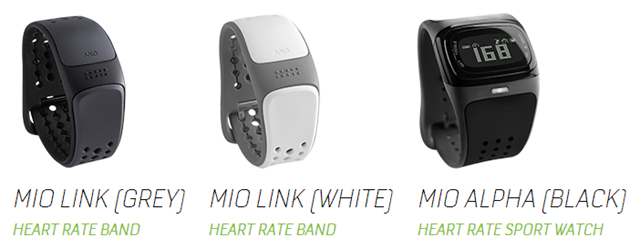
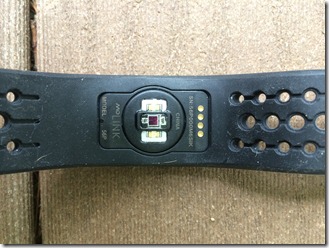
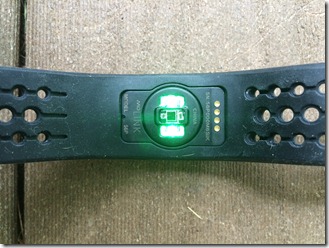
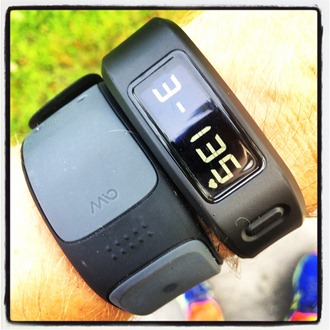
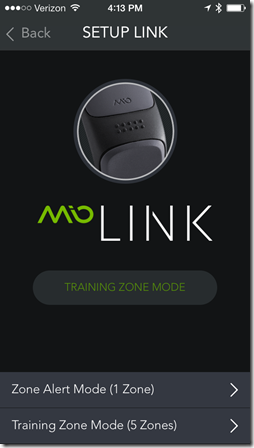
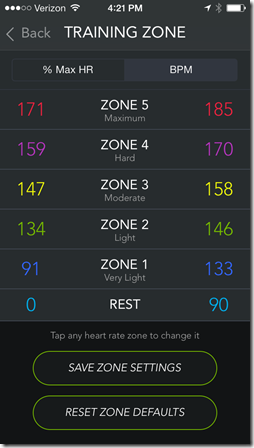
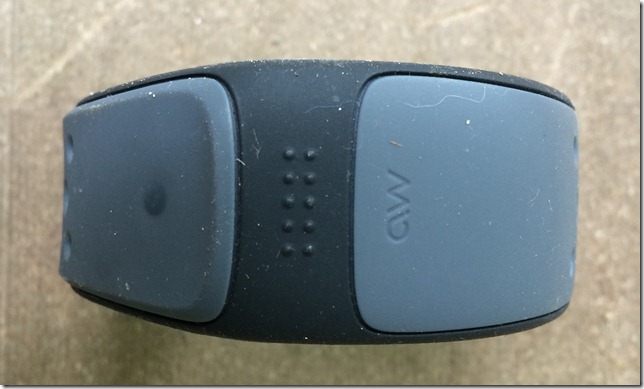
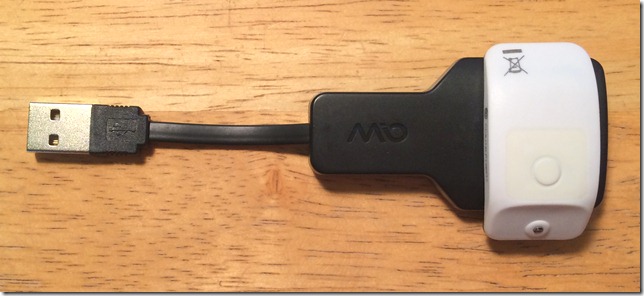
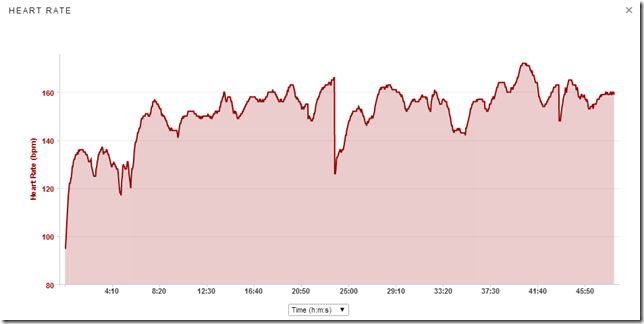
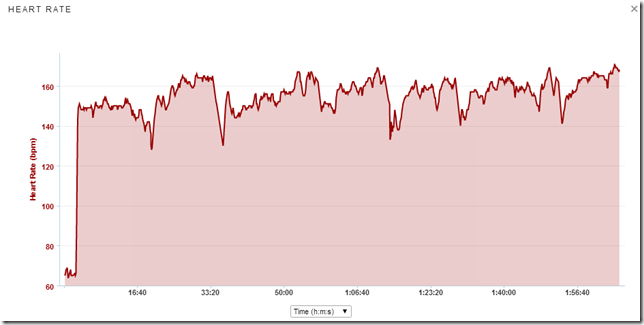
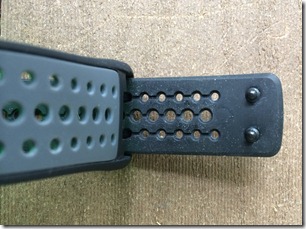
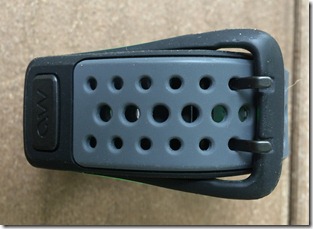


















Great review. I purchased a Mio Link a few months ago after some positive reviews. It was nice and I certainly preferred it to the chest strap that came with my fenix 2 (for whatever reason, I get heat rash something awful with chest straps, even soft ones), but it wasn’t perfect. My HR logs would occasionally show the odd blip; no worse than the chest strap, but still… I too found the strap a little finicky and not 100% comfortable, although again, still far more comfortable than a chest strap. I also found that, for whatever reason, it’s range wasn’t terribly good with some of my devices. For instance, in order for it to work well with my Garmin 610, I actually needed to wear it on the same wrist as the watch. I didn’t have this issue with my fenix 2, for what it’s worth. And finally, it was yet another thing to wear on my wrist.
After hearing Ray at DCRainmaker rave about his Scosche RHYTHM+. I gave it a try and it had none of the minor issues I mentioned above. The strap on the Scosche is so comfortable and flexible that I wear it on my upper arm around my bicep and then forget it’s there. I’ve stepped into the shower after an activity on several occasions while accidentally still wearing it due to forgetting about its presence. It also seems to have a much longer range than the Mio in that I have done some strength workouts with my watch in my bag 10-20 feet from me and still had an uninterrupted recording of my HR activity for that session. I hate be down on the Mio because I think it’s a great device, but if you like it, I think you’d love the Scosche.
I think I’m lucky in that the Mio is a good match for my body and stride (arm carry) so it works well. But I’ve seen the Scosche and am very tempted to get one for a comparative review!
Just bought a Scosche, couldn’t resist a comparison!
I have the Mio and it works great running. I’ve had some drop outs cycling but not many.
I have tried both the Mio Link and Scosche Rhythm after DCRainmaker’s reviews and although I like the idea of optical HR without the chest strap, after considerable experimentation I could not get either to work for me. I assume it is a fit problem. I’m pretty skinny and even when I tighten these down or try alternative locations, can never get a consistent signal without a lot of dropouts. So back to Garmin Run Dynamic chest strap, which performs nearly flawlessly..
Just ordered a Scosche Ryhthm+, looking forward to seeing how it compares to the Mio.
I recently got a Mio Link. My first run the data was clearly inaccurate; I had the Mio on the outside of my arm. The second and third runs with it, I had it on the inside of my arm, about three finger widths from my wrist, with my Forerunner 210 between the Mio and my wrist; there were some huge spikes in HR during the first 4-5 minutes which were clearly due to inaccurate readings, but after that the data seems reasonable and probably accurate for the rest of those runs. Today I wore the Mio on the inside of my wrist, 3-4 finger widths from my wrist, but I wet the spot on my arm where the Mio was going with water before snugging up the band; there were no wild spikes at the beginning of the run and the data during my 18 mile run all seemed reasonable.
Has anyone thought about the effect of radiating blood cells with high intensity light. A regular heart rate strap is passive. These new gizmos have unknown consequences. Well, I guess a regular Heart rate monitor is not totally passive since it transmits the data to the watch. Might be bad too. Maybe the things we do to monitor our health cause more damage.
The wavelength of light coming from it is part of the visible spectrum, which is quite different than high energy particles or shorter wavelength UV light, X-rays, etc. It’s not something I’m worried about. You may not want to stare at the green light from it for extended periods of time, although I don’t recall seeing a warning about that.
I’ve been dreaming of this product for a few years now. I’m sure I’ll be an early adopter so long as it’s compatible with my current Garmin. I love the data when I wear my chest strap, which is almost never. I remember when I first saw a fitness HRM about 15 years ago. My friend (who was wearing it) quipped that engineering wanted to put two vertical over the shoulder straps on it but marketing vetoed.
Suspender HRM would have been interesting!
I like the idea of the Link but I think I still need the digital readout while running. I like running with tech but try to limit my gear.
I think what Mio and TomTom have done is great. Runners who want to train with HR no longer need to worry about the chest strap.
However, the HR training via the wrist is just temporary. If athletes have an appetite for it, patches or wearable tattoos are coming around the corner. Possible more accurate? Maybe – but it will cut down on the hardware needed while running.
Do patches/tattoos exist yet? Sounds interesting!
Hi. I got a question.
I have bought recently a MIO Alpha, but can not pair it with my Garmin 620.
Is it possible?
And, how?
Thanks.
Not sure if the Alpha will pair, might just be the Mio Link that does it.
So simple question, do I have to carry a separate device w/ the Link? There is no display correct?
Yes, you need either a phone or a watch that can communicate.
Be careful purchasing this product. I have been very unsatisfied by the accuracy of the heart rate measurement with the mio link. It will work fine for a while and then the readings will be all over the place. I am not sure if it is a bad unit or not, but when I reached out to customer service they would not work with me to resolve the situation. In my opinion your money may be better spent elsewhere.
You are lucky. I have sometimes about 60 beats deviation from chest belt data. I measured about 150 beats with chest belt and 90 beats with Mio Link while running. Guess which one is correct! :-) I am not sure whether this is an issue with the current product or it is something general, but I am very disappointed…